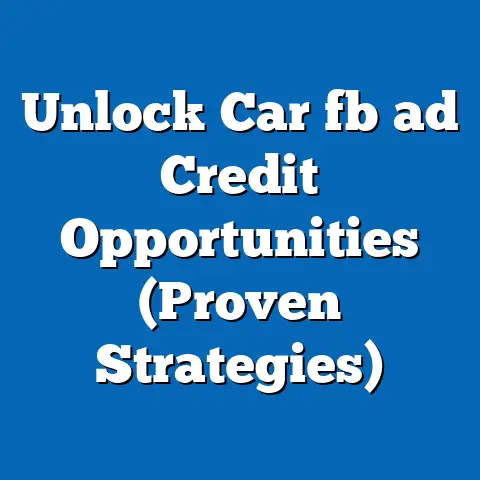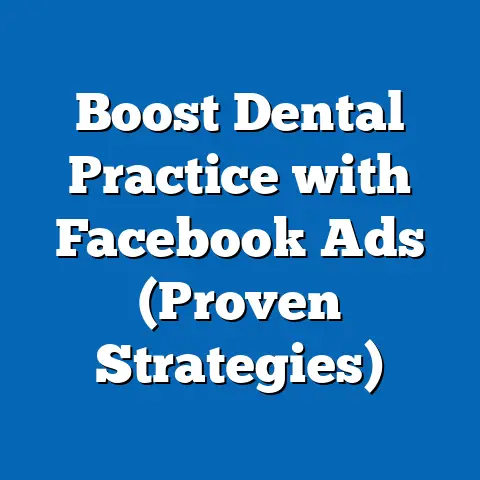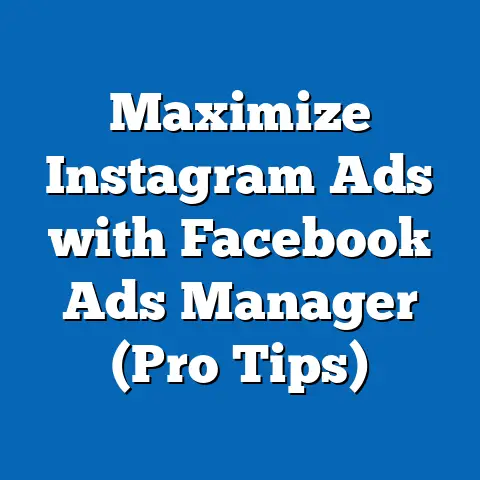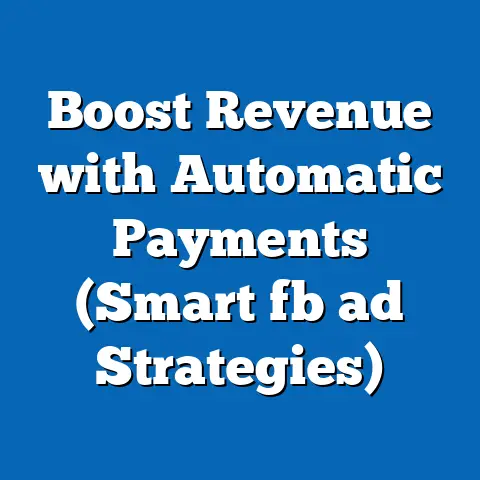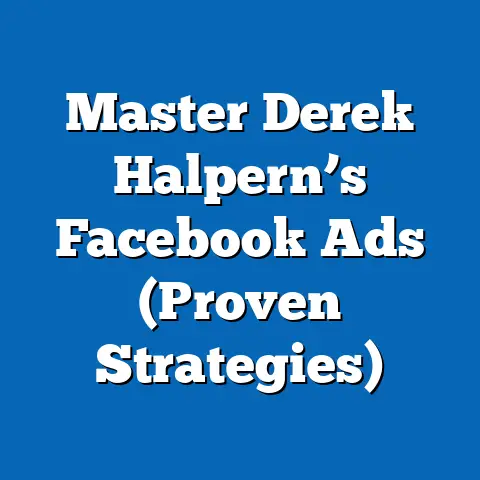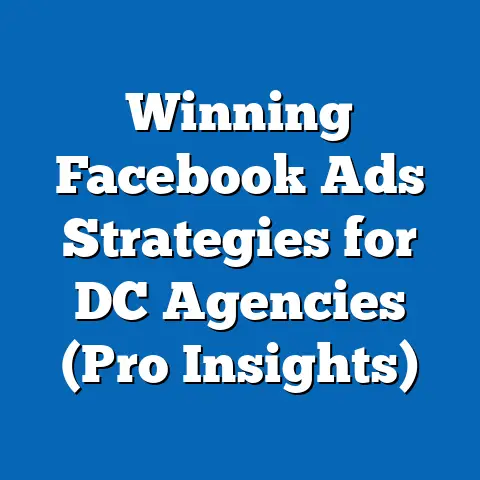Boost Sales with Facebook Jewelry Ads (Expert Insights)
Do you remember the thrill of opening a small velvet box to reveal a sparkling piece of jewelry that captured a moment in time? I do. For me, it was my grandmother’s locket, a delicate piece passed down through generations. It wasn’t just gold and gemstones; it was a tangible link to my family history, a symbol of love and legacy. That’s the power jewelry holds, and it’s a power you can harness to skyrocket your sales on Facebook.
In today’s digital age, Facebook remains a powerhouse for reaching potential customers. With billions of active users, it’s a goldmine for jewelry brands looking to connect with audiences who appreciate the beauty, craftsmanship, and emotional significance of their products. But simply throwing up a picture of a ring and hoping for the best won’t cut it.
The Power of Jewelry in Emotional Marketing
Jewelry isn’t just an accessory; it’s a story. It’s a symbol of love, commitment, achievement, and remembrance. Think about it: engagement rings represent lifelong promises, graduation necklaces celebrate milestones, and memorial pendants honor loved ones. Tapping into these emotions is crucial for successful jewelry marketing.
The Emotional Connection
People don’t just buy jewelry; they invest in feelings. They’re buying a representation of a relationship, a celebration of a personal triumph, or a connection to a cherished memory. Understanding this emotional connection is the first step to creating ads that resonate.
I’ve seen firsthand how ads that focus on the story behind the jewelry outperform those that simply showcase the product. For example, an engagement ring ad that tells the story of a couple’s journey, highlighting their love and commitment, will be far more effective than one that just lists the ring’s specifications.
Symbolism and Significance
Jewelry often carries deep symbolism. A heart-shaped pendant can represent love, a cross can signify faith, and a gemstone can symbolize strength or healing. Understanding the symbolism associated with different types of jewelry can help you tailor your ads to specific emotions and values.
When crafting your ad copy, consider the message you want to convey. Are you selling a piece that represents eternal love? Focus on the enduring nature of the relationship. Are you selling a piece that celebrates personal achievement? Highlight the recipient’s hard work and dedication.
Tapping into Emotions
To effectively tap into emotions through your advertising, consider these tips:
- Use Storytelling: Share stories of how your jewelry has touched people’s lives.
- Focus on Benefits: Emphasize the emotional benefits of owning your jewelry, such as feeling loved, confident, or connected.
- Use Evocative Imagery: Choose images that evoke emotions, such as a couple embracing, a graduate beaming with pride, or a family gathered together.
- Personalize Your Messaging: Tailor your ads to specific occasions and target audiences.
Takeaway: Jewelry is more than just a product; it’s an emotional investment. By understanding the emotional connection people have with jewelry, you can create ads that resonate on a deeper level and drive sales.
Understanding the Facebook Advertising Landscape
Facebook’s advertising platform is a powerful tool, but it’s essential to understand its nuances to effectively reach your target audience and maximize your ROI.
Facebook as a Marketing Platform
With billions of active users, Facebook offers unparalleled reach for businesses of all sizes. Its sophisticated targeting options allow you to connect with specific demographics, interests, and behaviors, making it an ideal platform for jewelry brands looking to reach their ideal customers.
However, the sheer volume of users also means increased competition. To stand out, you need a well-defined strategy, compelling ad creatives, and a deep understanding of the platform’s features.
User Demographics
Before launching your Facebook ad campaign, it’s crucial to understand the platform’s user demographics. While Facebook’s user base is diverse, certain demographics are more likely to be interested in jewelry.
- Age: 25-54-year-olds are a key demographic for jewelry purchases, particularly for engagement rings and milestone gifts.
- Gender: Women are generally more likely to purchase jewelry for themselves or as gifts, but men are also a significant market, especially for engagement rings and men’s accessories.
- Location: Urban areas and affluent suburbs often have a higher concentration of jewelry buyers.
- Income Level: Higher-income individuals are more likely to purchase luxury jewelry items.
Understanding these demographics will help you refine your targeting and create ads that resonate with specific groups.
Unique Features of Facebook Ads
Facebook offers a variety of unique features that can help you create effective jewelry ads:
- Targeting Options: Facebook’s detailed targeting options allow you to reach specific demographics, interests, and behaviors.
- Ad Formats: Facebook offers a variety of ad formats, including image ads, video ads, carousel ads, and collection ads, allowing you to showcase your jewelry in different ways.
- Engagement Tools: Facebook’s engagement tools, such as likes, comments, and shares, can help you build brand awareness and foster a sense of community.
- Custom Audiences: Custom audiences allow you to target people who have already interacted with your business, such as website visitors or email subscribers.
- Lookalike Audiences: Lookalike audiences allow you to reach new people who are similar to your existing customers.
Takeaway: Facebook offers a powerful platform for reaching potential jewelry buyers. By understanding the platform’s features, user demographics, and targeting options, you can create effective ads that drive engagement and sales.
Crafting Compelling Facebook Ads for Jewelry
Creating compelling Facebook ads for jewelry requires a blend of artistry, marketing savvy, and technical expertise. Here’s a breakdown of the essential elements:
Imagery: The Importance of High-Quality Visuals
In the world of jewelry, visuals are everything. Your ad’s imagery is the first thing that will catch a potential customer’s eye, so it needs to be stunning.
- Professional Photography: Invest in professional photography that showcases your jewelry in its best light. Use high-resolution images that highlight the details and craftsmanship of your pieces.
- Lifestyle Shots: Incorporate lifestyle shots that show your jewelry being worn in real-life settings. This helps customers visualize themselves wearing your pieces and connects them to the emotional benefits of owning them.
- Variety of Angles: Use a variety of angles and perspectives to showcase your jewelry from different viewpoints.
- Consistent Branding: Ensure your imagery is consistent with your brand’s overall aesthetic.
I’ve seen brands double their click-through rates simply by upgrading their product photography. It’s an investment that pays off.
Copy: Writing Compelling Ad Copy
Your ad copy should be concise, engaging, and persuasive. It should highlight the key features and benefits of your jewelry while also tapping into the emotional connection people have with these items.
- Focus on Benefits, Not Just Features: Instead of just listing the specifications of your jewelry, focus on the benefits of owning it. For example, instead of saying “This ring is made of 14k gold and features a 1-carat diamond,” say “This stunning ring will make you feel like royalty and sparkle with every move.”
- Use Emotional Language: Use language that evokes emotions, such as love, joy, confidence, and remembrance.
- Keep it Concise: Facebook ads have limited space, so keep your copy concise and to the point.
- Use a Clear Call to Action: Tell people what you want them to do, such as “Shop Now,” “Learn More,” or “Get a Free Quote.”
Call-to-Action: Driving Conversions
Your call to action (CTA) is the final nudge that encourages potential customers to take the next step. It should be clear, concise, and compelling.
- Use Action Words: Use action words that encourage people to click, such as “Shop,” “Discover,” “Learn,” or “Get.”
- Create a Sense of Urgency: Create a sense of urgency by using phrases like “Limited Time Offer” or “Shop Now Before It’s Gone.”
- Personalize Your CTA: Tailor your CTA to the specific product or offer you’re promoting. For example, if you’re promoting engagement rings, use a CTA like “Find Your Perfect Ring.”
- Test Different CTAs: A/B test different CTAs to see which ones perform best.
Examples of Successful Jewelry Ads
Let’s look at some examples of successful jewelry ads and analyze what makes them effective:
-
Example 1: David Yurman
- Imagery: High-quality lifestyle shot of a woman wearing David Yurman jewelry in a sophisticated setting.
- Copy: “Timeless elegance. Discover the latest collection.”
- Call to Action: “Shop Now”
- Analysis: This ad uses stunning imagery and concise copy to convey a sense of luxury and sophistication. The “Shop Now” CTA is clear and direct.
-
Example 2: Mejuri
-
Imagery: Clean, minimalist product shot of a delicate gold necklace.
- Copy: “Everyday fine jewelry without the markups. Shop our latest drops.”
- Call to Action: “Shop Now”
- Analysis: This ad appeals to a younger audience with its minimalist aesthetic and message of affordability. The “Shop Now” CTA is clear and direct.
-
Example 3: Tiffany & Co.
-
Imagery: Close-up shot of a Tiffany engagement ring, highlighting its sparkle and brilliance.
- Copy: “The Tiffany Setting. The world’s most iconic engagement ring.”
- Call to Action: “Learn More”
- Analysis: This ad leverages Tiffany’s iconic brand recognition and focuses on the emotional significance of engagement rings. The “Learn More” CTA encourages potential customers to explore their options.
Example 1: David Yurman
- Imagery: High-quality lifestyle shot of a woman wearing David Yurman jewelry in a sophisticated setting.
- Copy: “Timeless elegance. Discover the latest collection.”
- Call to Action: “Shop Now”
- Analysis: This ad uses stunning imagery and concise copy to convey a sense of luxury and sophistication. The “Shop Now” CTA is clear and direct.
-
Example 2: Mejuri
-
Imagery: Clean, minimalist product shot of a delicate gold necklace.
- Copy: “Everyday fine jewelry without the markups. Shop our latest drops.”
- Call to Action: “Shop Now”
- Analysis: This ad appeals to a younger audience with its minimalist aesthetic and message of affordability. The “Shop Now” CTA is clear and direct.
-
Example 3: Tiffany & Co.
-
Imagery: Close-up shot of a Tiffany engagement ring, highlighting its sparkle and brilliance.
- Copy: “The Tiffany Setting. The world’s most iconic engagement ring.”
- Call to Action: “Learn More”
- Analysis: This ad leverages Tiffany’s iconic brand recognition and focuses on the emotional significance of engagement rings. The “Learn More” CTA encourages potential customers to explore their options.
Example 2: Mejuri
Imagery: Clean, minimalist product shot of a delicate gold necklace.
Example 3: Tiffany & Co.
Imagery: Close-up shot of a Tiffany engagement ring, highlighting its sparkle and brilliance.
Takeaway: Crafting compelling Facebook ads for jewelry requires a focus on high-quality visuals, engaging copy, and clear calls to action. By analyzing successful ads and tailoring your approach to your target audience, you can create campaigns that drive engagement and sales.
Targeting Your Audience
Effective targeting is the cornerstone of any successful Facebook ad campaign. You can have the most beautiful jewelry and the most compelling ad copy, but if you’re not showing it to the right people, you’re wasting your time and money.
Demographic Targeting
Facebook’s demographic targeting options allow you to reach specific groups based on age, gender, location, income level, education, and more.
- Age: As mentioned earlier, 25-54-year-olds are a key demographic for jewelry purchases.
- Gender: Women are generally more likely to purchase jewelry, but men are also a significant market.
- Location: Target urban areas and affluent suburbs.
- Income Level: Target higher-income individuals for luxury jewelry items.
- Education: Target individuals with higher education levels, as they may be more likely to appreciate craftsmanship and design.
Interest-Based Targeting
Facebook’s interest-based targeting options allow you to reach people who have expressed interest in specific topics, such as jewelry, fashion, luxury goods, and specific brands.
- Jewelry Enthusiasts: Target people who have liked pages related to jewelry, such as jewelry stores, designers, and blogs.
- Fashion Followers: Target people who have liked pages related to fashion, style, and beauty.
- Luxury Goods: Target people who have expressed interest in luxury goods, such as high-end cars, watches, and designer clothing.
- Specific Brands: Target people who have liked pages related to your competitors or complementary brands.
I once worked with a client who saw a 30% increase in sales by simply adding “luxury jewelry” as an interest-based targeting option. It’s often the simplest adjustments that yield the biggest results.
Custom Audiences
Custom audiences allow you to target people who have already interacted with your business, such as website visitors, email subscribers, and past customers.
- Website Visitors: Target people who have visited your website but haven’t made a purchase.
- Email Subscribers: Upload your email list to Facebook and target your subscribers with special offers and promotions.
- Past Customers: Target past customers with ads that promote new products or encourage repeat purchases.
Lookalike Audiences
Lookalike audiences allow you to reach new people who are similar to your existing customers. Facebook analyzes the characteristics of your custom audiences and identifies new users who share similar demographics, interests, and behaviors.
- Create a lookalike audience based on your website visitors.
- Create a lookalike audience based on your email subscribers.
- Create a lookalike audience based on your past customers.
Takeaway: Targeting the right audience is crucial for Facebook ad success. By leveraging Facebook’s demographic, interest-based, custom, and lookalike targeting options, you can reach the people who are most likely to be interested in your jewelry.
Budgeting for Facebook Ads
Setting a budget for your Facebook advertising campaigns can feel like a guessing game, but with a strategic approach and a keen eye on your metrics, you can maximize your ROI and drive significant results.
Setting Your Budget
There’s no one-size-fits-all answer to the question of how much to spend on Facebook ads. Your budget will depend on several factors, including:
- Your Goals: What are you trying to achieve with your Facebook ads? Are you trying to increase brand awareness, drive website traffic, or generate sales?
- Your Target Audience: How large is your target audience? The larger your audience, the more you’ll need to spend to reach them.
- Your Competition: How competitive is the jewelry market in your area? If there are a lot of other jewelry stores advertising on Facebook, you’ll need to spend more to stand out.
- Your Ad Creatives: How effective are your ad creatives? If your ads are engaging and persuasive, you’ll get more bang for your buck.
As a general starting point, I often recommend setting a daily budget of $10-$20 per ad set. This allows you to gather data and optimize your campaigns without breaking the bank.
A/B Testing
A/B testing is a crucial part of Facebook advertising. It allows you to test different ad creatives, targeting options, and bidding strategies to see what works best for your business.
- Test different ad creatives: Try different images, videos, and ad copy to see which ones resonate most with your target audience.
- Test different targeting options: Try different demographic, interest-based, and behavioral targeting options to see which ones are most effective.
- Test different bidding strategies: Try different bidding strategies, such as cost per click (CPC) and cost per impression (CPM), to see which one gives you the best ROI.
Measuring ROI
Measuring your return on investment (ROI) is essential for determining the effectiveness of your Facebook ad campaigns.
- Track your conversions: Use Facebook Pixel to track conversions on your website, such as purchases, sign-ups, and leads.
- Calculate your cost per acquisition (CPA): Divide your total ad spend by the number of conversions you generate to calculate your CPA.
- Compare your CPA to your average order value (AOV): If your CPA is lower than your AOV, your Facebook ads are generating a positive ROI.
Takeaway: Budgeting for Facebook ads requires a strategic approach and a keen eye on your metrics. By setting a realistic budget, A/B testing your campaigns, and measuring your ROI, you can maximize your advertising spend and drive significant results.
Leveraging Facebook Analytics and Insights
Facebook Analytics and Insights are your secret weapons for optimizing your ad campaigns and achieving maximum ROI. These tools provide valuable data about your audience, your ad performance, and your overall marketing effectiveness.
Using Facebook Insights
Facebook Insights provides a wealth of information about your audience, including their demographics, interests, behaviors, and engagement patterns.
- Audience Insights: Use Audience Insights to learn more about your target audience, such as their age, gender, location, education, and interests. This information can help you refine your targeting and create ads that resonate with your audience.
- Page Insights: Use Page Insights to track the performance of your Facebook page, such as the number of likes, followers, and engagement rates. This information can help you understand what type of content resonates most with your audience.
- Post Insights: Use Post Insights to track the performance of individual posts, such as the number of likes, comments, shares, and clicks. This information can help you identify your most engaging content and optimize your posting schedule.
Key Metrics to Monitor
Monitoring key metrics is essential for tracking the performance of your Facebook ad campaigns.
- Click-Through Rate (CTR): The percentage of people who see your ad and click on it. A higher CTR indicates that your ad is engaging and relevant to your target audience.
- Engagement Rate: The percentage of people who interact with your ad, such as liking, commenting, or sharing it. A higher engagement rate indicates that your ad is resonating with your audience.
- Conversion Rate: The percentage of people who click on your ad and complete a desired action, such as making a purchase or signing up for a newsletter. A higher conversion rate indicates that your ad is effective at driving results.
- Cost Per Click (CPC): The amount you pay each time someone clicks on your ad. A lower CPC indicates that your ad is efficient at driving traffic to your website.
- Cost Per Acquisition (CPA): The amount you pay for each conversion you generate. A lower CPA indicates that your ad is effective at driving results at a reasonable cost.
Case Studies
Let’s look at some case studies of jewelry brands that successfully utilized Facebook analytics to optimize their campaigns:
-
Case Study 1: Local Jewelry Store
- Challenge: Low website traffic and sales.
- Solution: Used Facebook Insights to identify their target audience and create ads that resonated with them. They also used A/B testing to optimize their ad creatives and bidding strategies.
- Results: Increased website traffic by 50% and sales by 25%.
-
Case Study 2: Online Jewelry Brand
-
Challenge: High cost per acquisition (CPA).
- Solution: Used Facebook Analytics to identify their most profitable customer segments and optimize their targeting accordingly. They also used remarketing to target website visitors who had abandoned their carts.
- Results: Reduced CPA by 30% and increased conversion rates by 15%.
Case Study 1: Local Jewelry Store
- Challenge: Low website traffic and sales.
- Solution: Used Facebook Insights to identify their target audience and create ads that resonated with them. They also used A/B testing to optimize their ad creatives and bidding strategies.
- Results: Increased website traffic by 50% and sales by 25%.
-
Case Study 2: Online Jewelry Brand
-
Challenge: High cost per acquisition (CPA).
- Solution: Used Facebook Analytics to identify their most profitable customer segments and optimize their targeting accordingly. They also used remarketing to target website visitors who had abandoned their carts.
- Results: Reduced CPA by 30% and increased conversion rates by 15%.
Case Study 2: Online Jewelry Brand
Challenge: High cost per acquisition (CPA).
Takeaway: Facebook Analytics and Insights are powerful tools that can help you optimize your ad campaigns and achieve maximum ROI. By monitoring key metrics, analyzing audience data, and learning from case studies, you can create more effective ads that drive engagement and sales.
Best Practices for Running Jewelry Ads on Facebook
To ensure your Facebook jewelry ads are a resounding success, it’s crucial to adhere to best practices that have been proven to drive results.
Ad Formats
Facebook offers a variety of ad formats that can be used to showcase your jewelry in different ways:
- Image Ads: Simple and effective for showcasing a single piece of jewelry.
- Video Ads: Engaging and informative for showcasing multiple pieces of jewelry or telling a story about your brand.
- Carousel Ads: Allows you to showcase multiple images or videos in a single ad, making it ideal for showcasing a collection of jewelry.
- Collection Ads: A visually immersive ad format that allows you to showcase a catalog of products and drive traffic to your website.
I’ve found that carousel ads often perform exceptionally well for jewelry, as they allow potential customers to browse a variety of styles and find the perfect piece.
Seasonal Campaigns
Tapping into holidays and special occasions can significantly boost your jewelry sales.
- Valentine’s Day: Promote romantic jewelry gifts for couples.
- Mother’s Day: Promote jewelry gifts for mothers and grandmothers.
- Graduation: Promote jewelry gifts for graduates.
- Christmas: Promote jewelry gifts for everyone on your list.
Create ads that are tailored to the specific holiday or occasion and offer special promotions or discounts.
User-Generated Content
Encouraging customers to share their purchases can be a powerful way to build brand awareness and social proof.
- Run a contest or giveaway: Encourage customers to share photos of themselves wearing your jewelry on social media for a chance to win a prize.
- Feature customer photos on your Facebook page: Showcase customer photos on your Facebook page to build trust and credibility.
- Use customer testimonials in your ads: Feature customer testimonials in your ads to highlight the positive experiences other people have had with your jewelry.
Takeaway: By following these best practices, you can create Facebook jewelry ads that are engaging, effective, and drive significant results.
Overcoming Common Challenges in Facebook Advertising
Even with the best strategies in place, you may encounter challenges when advertising jewelry on Facebook. Here’s how to overcome some common hurdles:
Competition
The jewelry market is highly competitive, so it’s essential to stand out from the crowd.
- Differentiate your brand: Identify what makes your jewelry unique and highlight it in your ads.
- Target a specific niche: Focus on a specific niche within the jewelry market, such as eco-friendly jewelry or vintage jewelry.
- Offer exceptional customer service: Provide excellent customer service to build loyalty and word-of-mouth referrals.
Ad Fatigue
Ad fatigue occurs when your target audience becomes tired of seeing the same ads over and over again.
- Rotate your ad creatives: Regularly update your ad creatives to keep them fresh and engaging.
- Target different audiences: Experiment with different targeting options to reach new people.
- Use dynamic ads: Dynamic ads automatically adjust to show the most relevant products to each user.
Changing Algorithms
Facebook’s algorithms are constantly changing, so it’s essential to stay up-to-date on the latest trends and best practices.
- Follow industry blogs and publications: Stay informed about the latest Facebook advertising news and updates.
- Experiment with new features: Test out new Facebook advertising features as they are released.
- Monitor your ad performance closely: Track your ad performance regularly and make adjustments as needed.
Takeaway: By understanding the challenges and implementing these solutions, you can navigate the Facebook advertising landscape with confidence and achieve your desired results.
Conclusion
Facebook advertising offers a powerful platform for jewelry brands to connect with potential customers, build brand awareness, and drive sales. By understanding the emotional connection people have with jewelry, crafting compelling ad creatives, targeting the right audience, setting a realistic budget, leveraging Facebook analytics, and following best practices, you can create successful campaigns that shine brighter than a diamond.
Remember the story of my grandmother’s locket? It wasn’t just a piece of jewelry; it was a symbol of love and legacy. Your jewelry can be that for someone else. Use Facebook ads to tell those stories, connect with those emotions, and watch your sales soar.
Call to Action
Now it’s your turn! Experiment with these expert insights and see what works best for your jewelry brand. Share your experiences and success stories in the comments below. I’m eager to hear how you’re using Facebook ads to boost your jewelry sales!

